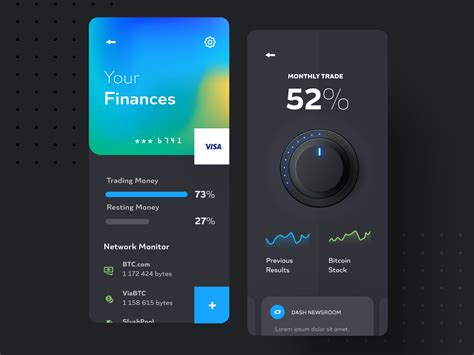Are you passionate about creating digital experiences that are not only visually appealing but also user-friendly? If so, then a career in UX/UI design may be the perfect fit for you. In this blog post, we will explore the essential aspects of UX/UI design, uncover the role and responsibilities of a UX/UI designer, and discuss the key skills needed to excel in this field. From understanding the fundamentals of user experience and user interface design to mastering design software and prototyping techniques, we will provide valuable insights into what it takes to become a successful UX/UI designer. Additionally, we will delve into the importance of user research and usability testing, as well as the vital role of collaboration with developers and stakeholders. Whether you are a seasoned designer looking to transition into the world of UX/UI or a budding enthusiast eager to learn more, this blog post will guide you on your journey to becoming a proficient and well-rounded UX/UI designer.
Table of Contents
Understanding the basics of UX/UI design
Understanding the basics of UX/UI design is essential for anyone looking to pursue a career in the field. User Experience (UX) and User Interface (UI) design are crucial elements in the creation of digital products and services. UX design focuses on the overall feel of the product, while UI design focuses on the look and interactivity. Both are integral to the success of any digital project.
UX/UI designers need to have a deep understanding of user behavior, psychology, and design principles. They are responsible for creating seamless and intuitive experiences for users across various digital platforms. This requires a blend of technical skills, creative thinking, and a user-centric approach.
As a UX/UI designer, it’s important to be well-versed in industry-standard tools and software such as Adobe XD, Sketch, Figma, and InVision. These tools are essential for creating wireframes, mockups, and prototypes that bring design concepts to life.
Furthermore, understanding the basics of UX/UI design involves staying updated with the latest trends and best practices in the field. This includes keeping an eye on emerging technologies, design patterns, and user preferences to ensure that designs are always at the forefront of innovation.
Exploring the role of a UX/UI designer
UX/UI designers play a crucial role in today’s digital landscape, as they are responsible for creating seamless and intuitive user experiences across various devices and platforms. Their primary goal is to design products and services that not only look visually appealing but also provide a high level of usability and functionality for the end users.
One of the key responsibilities of a UX/UI designer is to conduct extensive research to understand the needs and preferences of the target audience. This involves analyzing user behavior, conducting surveys, and studying market trends to gain insights that can inform the design process. By understanding the needs of the users, designers can create solutions that address pain points and enhance the overall user experience.
In addition to research, UX/UI designers are also involved in the process of creating wireframes, prototypes, and visual designs. They work closely with other team members, such as developers and stakeholders, to ensure that the design solutions meet the technical and business requirements. This collaborative approach is essential for creating cohesive and impactful designs that align with the overall goals of the project.
Furthermore, UX/UI designers are often tasked with conducting usability testing to gather feedback and identify areas for improvement. This iterative process allows designers to refine their designs based on user feedback, ultimately leading to more user-friendly and effective solutions. By continuously evaluating and iterating their designs, designers can ensure that the final product meets the needs and expectations of the users.
Developing essential skills for the job
As a UX/UI designer, it is crucial to develop essential skills to excel in the field. Good communication skills are vital for conveying ideas to team members, stakeholders, and clients. Whether it’s presenting design concepts or receiving feedback, being able to communicate effectively is essential. Additionally, problem-solving skills are necessary to tackle the various challenges that may arise during the design process. Being able to think critically and come up with innovative solutions is a valuable skill that sets a designer apart.
Moreover, having a strong understanding of design principles is crucial for creating visually appealing and user-friendly interfaces. This includes knowledge of color theory, typography, layout, and hierarchy. Understanding how these elements work together can greatly enhance a designer’s ability to create impactful designs. Furthermore, proficiency in design software such as Adobe XD, Sketch, or Figma is essential for translating ideas into tangible designs. Mastering these tools allows designers to bring their concepts to life with precision and efficiency.
Lastly, it’s important for UX/UI designers to stay updated with the latest trends and technologies in the industry. Continuous learning and adapting to new tools and methodologies will ensure that designers remain relevant and competitive in the field. By proactively developing these essential skills, UX/UI designers can elevate their capabilities and deliver exceptional design solutions.
Developing essential skills for the job is an ongoing process that requires dedication and continuous self-improvement. By honing communication, problem-solving, design principles, software proficiency, and staying updated with industry trends, designers can position themselves for success in the ever-evolving landscape of UX/UI design.
Gaining proficiency in design software
When it comes to UX/UI design, having proficiency in design software is essential. Design software is the primary tool that designers use to bring their creative ideas to life. Whether it’s Adobe Creative Suite, Sketch, or Figma, mastering these tools is crucial for creating visually appealing and functional designs. A good understanding of design software allows designers to work efficiently and effectively, bringing their concepts to reality with precision and finesse.
Proficiency in design software also allows designers to collaborate seamlessly with their team members. When everyone is well-versed in the same software, it makes it easier to share files, provide feedback, and make necessary revisions. This level of proficiency ensures that the workflow is smooth and efficient, leading to better outcomes and results.
Additionally, gaining proficiency in design software enables designers to stay updated with the latest features and tools. As technology evolves, so do design software, and by continuously learning and exploring new functionalities, designers can elevate their skills and stay ahead of the curve. This adaptability is essential in a rapidly changing industry like UX/UI design.
Overall, gaining proficiency in design software is a continuous journey that requires dedication and practice. By investing time and effort in mastering these tools, designers can enhance their ability to create innovative and impactful design solutions.
Creating user-centered design solutions
Creating user-centered design solutions is an essential part of the UX/UI designer’s role. By putting the needs and preferences of the end user at the forefront of the design process, designers can ensure that the final product is intuitive, user-friendly, and ultimately successful.
One of the key steps in creating user-centered design solutions is conducting thorough user research. This involves getting to know the target audience, understanding their behaviors, preferences, and pain points, and using this knowledge to inform the design process. By gaining insights into the end user’s needs, designers can tailor their solutions to meet these needs effectively.
Another important aspect of creating user-centered design solutions is usability testing. This involves gathering feedback from users through testing prototypes and identifying any areas for improvement. By involving the end user in the design process, designers can ensure that the final product meets their needs and expectations.
Ultimately, creating user-centered design solutions requires a deep understanding of the end user and a commitment to designing with their needs in mind. By prioritizing the user experience, designers can create solutions that are both functional and enjoyable for the people who will ultimately be using them.
Collaborating with developers and stakeholders
Collaborating with developers and stakeholders is an essential part of the job for a UX/UI designer. Working closely with developers allows for a seamless integration of design concepts into the final product. This collaboration ensures that the design vision is realized in the development process.
On the other hand, collaborating with stakeholders involves understanding their vision and requirements for the project. It is important for UX/UI designers to effectively communicate with stakeholders to align the design goals with the overall project objectives.
Successful collaboration with developers and stakeholders requires strong communication skills, the ability to translate technical jargon into layman’s terms, and a deep understanding of the project’s goals and requirements.
Ultimately, the collaboration between UX/UI designers, developers, and stakeholders is crucial for the success of any project, as it ensures that the final product meets both design and business objectives.
Conducting user research and usability testing
Conducting user research and usability testing are crucial steps in the process of creating a successful UX/UI design. These practices allow designers to gain valuable insights into the needs, preferences, and behaviors of the target users, helping them to make informed design decisions.
By conducting user research, designers can gather data through various methods such as interviews, surveys, and observations. This helps them to understand the goals and motivations of the users, as well as their pain points and challenges. This information is essential for creating user-centered design solutions that truly meet the needs of the intended audience.
Additionally, usability testing involves evaluating a design by testing it with actual users to uncover any usability issues. This typically involves observing users as they interact with a prototype or a live product and gathering insights on how they use and perceive the design. This process is invaluable for identifying any usability problems and making necessary improvements.
Overall, conducting user research and usability testing are essential practices for any UX/UI designer who wants to create effective and impactful design solutions. By gaining a deep understanding of the users and testing the usability of the design, designers can ensure that their work meets the needs and expectations of the people who will be using it.
Mastering the art of prototyping
Mastering the art of prototyping is a crucial skill for any UX/UI designer looking to create outstanding design solutions. Prototyping allows designers to bring their ideas to life and test them before fully developing a product. It involves the creation of low-fidelity and high-fidelity prototypes to showcase the functionality and user interface of a design.
One of the key aspects of mastering prototyping is understanding the different prototyping tools available in the market. Designers should be proficient in using tools such as Sketch, Adobe XD, and Proto.io to create interactive and realistic prototypes. These tools enable designers to demonstrate the flow of their design and gather valuable feedback from stakeholders.
Another important skill to master in prototyping is the ability to iterate and refine prototypes based on user feedback. Designers should be able to take constructive criticism and make necessary adjustments to their designs. This iterative process is essential for creating user-centered design solutions that meet the needs of the target audience.
Ultimately, mastering the art of prototyping requires practice, patience, and a willingness to learn from others in the field. By honing their prototyping skills, designers can elevate their UX/UI design work to new heights and deliver exceptional user experiences.
Evaluating and iterating design solutions
When it comes to evaluating and iterating design solutions, it is crucial for UX/UI designers to continuously assess the effectiveness of their designs and make necessary improvements. This process involves gathering feedback from users, analyzing data, and making iterative changes to enhance the overall user experience.
One of the key aspects of evaluating and iterating design solutions is conducting usability testing. This allows designers to observe how users interact with the product and identify any pain points or areas for improvement. By gathering insights from real users, designers can make informed decisions about refining the design to better meet the needs of the target audience.
In addition to usability testing, gathering quantitative data through analytics tools can provide valuable information about user behavior and engagement. This data can help designers identify patterns and trends, allowing them to make data-driven decisions when iterating on design solutions.
Furthermore, actively seeking feedback from stakeholders and collaborating with cross-functional teams is essential in the process of evaluating and iterating design solutions. By involving various perspectives and expertise, designers can gain valuable insights and perspectives that can lead to more impactful and effective design solutions.
Keeping up with the latest trends in UX/UI design
In the ever-evolving world of UX/UI design, it is crucial for professionals to stay updated on the latest trends. With technology advancing rapidly, new design patterns, tools, and techniques are constantly emerging, shaping the way users interact with digital products.
One of the key trends in UX/UI design is the focus on accessibility and inclusivity. Designers are now prioritizing creating experiences that are usable by individuals of all abilities, ensuring that no one is left behind. This trend emphasizes the importance of inclusive design and the need to consider diverse user needs in the design process.
Another significant trend is the integration of AI and machine learning in UX/UI design. Automation and personalization are becoming increasingly prevalent, with AI technologies being used to analyze user behavior and tailor experiences to individual preferences. This trend is reshaping the way designers approach personalization and content delivery.
Furthermore, the emphasis on ethical design is gaining momentum in the UX/UI community. Designers are being encouraged to consider the ethical implications of their work, aiming to create experiences that are not only aesthetically pleasing and functional but also responsible and ethical. This trend reflects the growing awareness of the impact of design on society and the need for designers to be mindful of their influence.





